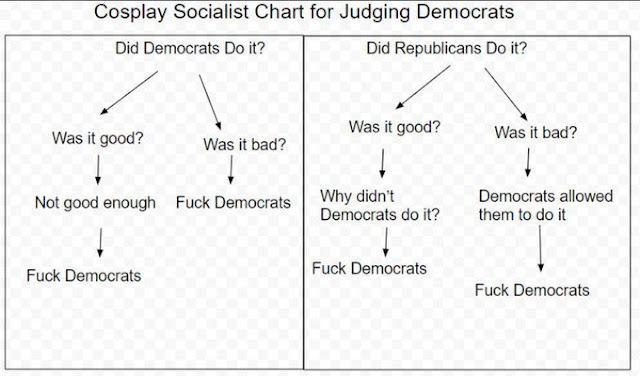Sunday, June 27, 2021
Sunday, May 16, 2021
Amphibian
The little fifty gallon pond is now in its third season. This is the earliest in the year that I've spotted an amphibian.
Tuesday, May 04, 2021
Ant transmutations
Ever since I read about Indian jumping ants in the Atlantic, I've been wondering how this works (epic-)genetically speaking.
When the queen of an Indian jumping ant colony dies:
Within hours of their queen’s death, female workers will begin to joust, fencing with their antennae, and nipping at each other’s heads. These dominance tournaments can last for more than a month, until, at long last, a dozen or so champions triumph. While the losers slink away to resume their workerly duties, the victors cast aside their former peasant status and become a new class of pseudo-royals called gamergates (no, not that kind). The queen phase of the colony ends, and the gamergate phase begins: Monarchy transforms into oligarchy, and new gamergates step up as each generation dies. The consequences of these tiny tussles range from the sociopolitical to the molecular. In earning the title of gamergate (pronounced gamm-ər-gayt), a female ant gains nearly exclusive rights to her colony’s reproductive responsibilities; she is among the very few of her sisters that can fertilize their eggs with the sperm of their brothers, the only available males. The transition rewires worker ants, altering their behavior and physiology until they become docile, nursery-bound “egg-laying machines,” Penick said. Gamergates stop leaving the nest. They lose their food-foraging chops and the will to hunt, relegating themselves instead to the darkness of their underground chambers, where they churn out eggs. They feast exclusively on the paralyzed prey served to them by workers. Normally these ants leap at assailants when disturbed—the classic “jumping” behavior that earned the species its name—but when confronted by intruders, gamergates cower and hide. Even their bodies reprioritize. The ants’ life span extends from six or seven months to three years or more. Their venom glands recede, and their ovaries swell to about five times their original size; the ants become, in a sense, perpetually pregnant. In perhaps the most astounding change of all, the ants’ brain shrinks by about 20 to 25 percent in volume when they become gamergates. (For humans, that’d be the rough equivalent of losing a hunk of brain the size of two tennis balls.) The downsizing isn’t uniform: The insects appear to selectively jettison bits of their brain devoted to hunting, foraging, spatial mapping, and the anty equivalent of critical thinking—a move that likely reroutes precious bodily resources to the ovaries. Jumping-ant brains are already quite small, about a tenth of a cubic millimeter in volume. But brain tissue is “very energetically costly,” Floria Mora-Kepfer Uy, an entomologist at the University of Rochester, told me. And when the future of the colony is at stake, every calorie counts. “There’s a trade-off between reproduction and cognition,” Uy said. It is a heavy crown to wear atop a newly lightened head.But what is even stranger is that the changes are reversible:
In a new paper published today in Proceedings of the Royal Society B, Penick, Liebig, and their colleagues report that the gamergate transformation is entirely reversible, down to the mind-boggling changes the ants’ brain tissue undergoes. When the researchers isolated gamergates from their colonies, depriving them of the social signals needed to maintain their über-fertile status, then reintroduced them to their peers, the ants rapidly regressed into workers. Their ovaries shriveled, leaving room for their venom glands to grow; their brains ballooned out. They reacquired their aggressive fighting acumen, and would once again jump when provoked. Functionally sterilized and juiced back up with intellect, they became once again indistinguishable from their commoner kin.It must be that various genes are turned off and on. How much (or little) of this epigenetic flexibility is retained in homo sapiens?
Friday, April 09, 2021
Bhabha scattering and the anomalous magnetic dipole moment of the muon
- Bhabha scattering is the electron-positron scattering process.
- Per Wiki:
Electron-positron colliders operating in the region of the low-lying hadronic resonances (about 1 GeV to 10 GeV), such as the Beijing Electron Synchrotron (BES) and the Belle and BaBar "B-factory" experiments, use large-angle Bhabha scattering as a luminosity monitor. To achieve the desired precision at the 0.1% level, the experimental measurements must be compared to a theoretical calculation including next-to-leading-order radiative corrections. The high-precision measurement of the total hadronic cross section at these low energies is a crucial input into the theoretical calculation of the anomalous magnetic dipole moment of the muon, which is used to constrain supersymmetry and other models of physics beyond the Standard Model.
- One would think Bhabha scattering is extremely well understood in terms of theoretical calculations. So I was surprised to find this paper from 2020
Patrick Janot, Stanisław Jadach,
Improved Bhabha cross section at LEP and the number of light neutrino species,
Physics Letters B, Volume 803, 2020, 135319, ISSN 0370-2693, https://doi.org/10.1016/j.physletb.2020.135319. (https://www.sciencedirect.com/science/article/pii/S0370269320301234)
Abstract: In e+e− collisions, the integrated luminosity is generally measured from the rate of low-angle Bhabha interactions e+e−→e+e−. In the published LEP results, the inferred theoretical uncertainty of ±0.061% on the predicted rate is significantly larger than the reported experimental uncertainties. We present an updated and more accurate prediction of the Bhabha cross section in this letter, which is found to reduce the Bhabha cross section by about 0.048%, and its uncertainty to ±0.037%. When accounted for, these changes modify the number of light neutrino species (and its accuracy), as determined from the LEP measurement of the hadronic cross section at the Z peak, to Nν=2.9963±0.0074. The 20-years-old 2σ tension with the Standard Model is gone. - A discussion of the recent muon result is on Peter Woit's blog. Some of the comments under that blog post are of interest.
- The 2019 state of affairs.
- It turns out that the hadron vacuum polarization is required for an accurate calculation of the Bhabha scattering cross-section, known at least since 1976.
Tuesday, April 06, 2021
The Epigenetics of Poverty
A preliminary, from Wiki: "DNA methylation is a biological process by which methyl groups are added to the DNA molecule. Methylation can change the activity of a DNA segment without changing the sequence. When located in a gene promoter, DNA methylation typically acts to repress gene transcription. In mammals, DNA methylation is essential for normal development and is associated with a number of key processes including genomic imprinting, X-chromosome inactivation, repression of transposable elements, aging, and carcinogenesis."
Someone drew my attention to this: Poverty leaves a mark on our genes. This is from 2019.
A new Northwestern University study challenges prevailing understandings of genes as immutable features of biology that are fixed at conception.
Previous research has shown that socioeconomic status (SES) is a powerful determinant of human health and disease, and social inequality is a ubiquitous stressor for human populations globally. Lower educational attainment and/or income predict increased risk for heart disease, diabetes, many cancers and infectious diseases, for example. Furthermore, lower SES is associated with physiological processes that contribute to the development of disease, including chronic inflammation, insulin resistance and cortisol dysregulation.
In this study, researchers found evidence that poverty can become embedded across wide swaths of the genome. They discovered that lower socioeconomic status is associated with levels of DNA methylation (DNAm) -- a key epigenetic mark that has the potential to shape gene expression -- at more than 2,500 sites, across more than 1,500 genes.
In other words, poverty leaves a mark on nearly 10 percent of the genes in the genome.
Lead author Thomas McDade said this is significant for two reasons.
"First, we have known for a long time that SES is a powerful determinant of health, but the underlying mechanisms through which our bodies 'remember' the experiences of poverty are not known," said McDade, professor of anthropology in the Weinberg College of Arts and Sciences at Northwestern and director of the Laboratory for Human Biology Research.
"Our findings suggest that DNA methylation may play an important role, and the wide scope of the associations between SES and DNAm is consistent with the wide range of biological systems and health outcomes we know to be shaped by SES."
Secondly, said McDade, also a faculty fellow at Northwestern's Institute for Policy Research, experiences over the course of development become embodied in the genome, to literally shape its structure and function.
"There is no nature vs. nurture," he adds.
McDade said he was surprised to find so many associations between socioeconomic status and DNA methylation, across such a large number of genes.
"This pattern highlights a potential mechanism through which poverty can have a lasting impact on a wide range of physiological systems and processes," he said.
A criticism of the field is here: Social epigenomics: Are we at an impasse?
Sunday, April 04, 2021
Benacerraf: What Numbers Could Not Be
Without commentary, here's a link to Benacerraf's original paper and a cut-paste job from the Stanford Encyclopedia of Philosophy.
Saturday, April 03, 2021
The metaphysical status of types
I'm reproducing a few paragraphs from chapter 7 of Peter Smith's Introduction to Formal Logic below. The thought is that if and when we teach a machine, it will at a minimum, expose the implicit assumptions in our metaphysics. There's more to think about than just the paragraphs below, but this much will do, I think.
7.1 Types vs tokens
We begin with two sections introducing relevant distinctions. Firstly, we want the distinction between types and tokens. This is best introduced via a simple example.
Suppose then that you and I take a piece of paper each, and boldly write ‘Logic is fun!’ a few times in the centre. So we produce a number of different physical inscriptions – perhaps yours are rather large and in blue ink, mine are smaller and in black pencil. Now we key the same encouraging motto into our laptops, and print out the results: we get more physical inscriptions, first some formed from pixels on our screens and then some formed from printer ink.
How many different sentences are there here? We can say: many, some in ink, some in pencil, some in pixels, etc. Equally, we can say: there is one sentence here, multiply instantiated. Evidently, we must distinguish the many different sentence-instances or sentence tokens – physically constituted in various ways, of different sizes, lasting for different lengths of time, etc. – from the one sentential form or sentence type which they are all instances of.
We can of course similarly distinguish word tokens from word types, and distinguish book tokens – e.g. printed copies – from book types (compare the questions ‘How many books has J. K. Rowling sold?’ and ‘How many books has J. K. Rowling written?’).
What makes a physical sentence a token of a particular type? And what exactly is the metaphysical status of types? Tough questions that we can’t answer here! But it is very widely agreed that we need some type/token distinction, however it is to be elaborated.
Types are very natural to us humans. We train deep neural networks to distinguish between types, like recognizing cats and dogs. But if you think about it, we've already "told" the neural network that types are important.
One can imagine that the ability to come up with types is very useful from the point of view of evolution, (e.g., identifying predator tokens as a type might be efficient), and that humans with faulty type mechanisms turn out to be evolutionary dead-ends. The thought experiment that might help to figure out where types come from is to figure out how to get a machine to come up with types from tokens without implicitly requiring that it must do so in the first place.
Sunday, March 14, 2021
Book memo: Measuring and Managing Information Risk
 Measuring and Managing Information Riskby Jack Jones; Jack FreundPublished by Butterworth-Heinemann, 2014
Measuring and Managing Information Riskby Jack Jones; Jack FreundPublished by Butterworth-Heinemann, 2014Sunday, March 07, 2021
Signal flags
At amazon.com, in the “Outdoor Flags & Banners” category, the #1 bestseller is this American Flag.

Coming in at #12 is this Trump 2024 flag:


There is another Trump 2024 at #45, and a Trump 2020 at #47.
This Ted Cruz flag has no sales ranking (i.e., I don’t think any have sold)

There are a number of Ted Cruz 2024 flags with various designs - at least six, of which I find only one that has a sales ranking. Coming in at #89,633 in the category Outdoors Flags & Banners is:

Sunday, February 28, 2021
Leslie Charteris - The Saint
Thanks to the pandemic and to Kindle Unlimited, I've now read the entire ouevre of The Saint, Leslie Charteris' creation. Well, all but one, which I had to find elsewhere. Charteris didn't want his first Saint novel to be remembered, and it is in general not available.
At one of its last reprints, Charteris wrote:It has been out of print for more years than I can guess at, and with no complaints from me. Personally I would have been very happy to leave it quietly in limbo: I was still under 21 when I wrote it, more than fifty years ago, and I am no more anxious to parade it than any other youthful indiscretion. Looking at it now, with absolute objectivity, I can see so much wrong with it that I am humbly astonished that it got published at all. In extenuation, it was only the third book I'd written, and the best I would say for it is that the first two were even worse. However, I can't deny writing it, its existence is a historical fact, and I suppose that anyone who is interested enough in backtracking into Simon Templar's and my own adolescent beginnings has a right to access to the awful truths.As to why Simon Templar, the Saint, was created:
....the fiction world today needs a Saint more than it ever did. For too many years now that scene has been dominated by the "anti-heroes" — those grim gray operators in a sunless sub-culture where global issues are worked out with totally unemotional pragmatism, those hapless uninspired puppets manipulated and expended by ruthlessly dedicated little brothers of Big Brother. It made morbidly fascinating narrative, but it never gave anyone a lift until it climaxed in the hypergadgeted parodies of 007 extravaganzas.
I was always sure that there was a solid place in escape literature for a rambunctious adventurer such as I dreamed up in my own youth, who really believed in the oldfashioned romantic ideals and was prepared to lay everything on the line to bring them to life. A joyous exuberance that could not find its fulfilment in pinball machines and pot. I had what may now seem a mad desire to spread the belief that there were worse, and wickeder, nut cases than Don Quixote.
Even now, half a century later, when I should be old enough to know better, I still cling to that belief. That there will always be a public for the old-style hero, who had a clear idea of justice, and a more than technical approach to love, and the ability to have some fun with his crusades. That is how and why the Saint was born, and why I hope he may eventually occupy a niche beside Robin Hood, d'Artagnan, and all the other-immortal true heroes of legend.
Sunday, February 21, 2021
A resource for formal logic
Wednesday, January 27, 2021
US House of Representatives - Committee Memberships by Party - Take 2
In a previous post, I looked at what percentage of House Committee seats were taken by the majority party, and found that for the 98th to 116th Congresses, the larger the majority, the larger the share of committee seats, in a roughly linear relationship. That led to a prediction of the Democrats, in the current (117th) Congress, getting 54.1% of the committee seats.
Well, the Democrats have outdone themselves, and I wish I knew just how they pulled it off. I have a sneaking suspicion they exploited the innumeracy of the Republicans.
Sunday, January 24, 2021
A reply to the Ode to Joy
Brüder, über'm Sternenzelt Muß ein lieber Vater wohnen. Ihr stürzt nieder, Millionen? Ahnest du den Schöpfer, Welt? Such' ihn über'm Sternenzelt! Über Sternen muß er wohnen.translate to:
Brothers, above the starry canopy There must dwell a loving father. Do you fall in worship, you millions? World, do you know your creator? Seek Him in the heavens; Above the stars must he dwell.The lyrics also refer to "Joy, daughter of Elysium". The Hindu answer to that is - Ananda, as in "Sat-chit-ananda", is a fundamental attribute the experience of Reality; and while not in the same musical league, wiser and just-as-good poetry tells where to seek Him/Her/It:
Saturday, January 23, 2021
Caltech is de-Millikaned
Caltech president Thomas F. Rosenbaum, acting on unanimous recommendations from the [Committee on Naming and Recognition (CNR)](https://inclusive.caltech.edu/about/commitments-progress/committee)and the authorization of the Caltech Board of Trustees, today announced the removal of the name of Caltech's founding president and first Nobel laureate, Robert A. Millikan, from campus buildings, assets, and honors. Rosenbaum and the Board also approved the removal of the names of Harry Chandler, Ezra S. Gosney, William B. Munro, Henry M. Robinson, and Albert B. Ruddock from campus assets and honors.
and
In taking this step, the Institute fully heeds the committee's recommendation to reckon and reconcile with the past, "publicly and unambiguously repudiat[ing] any shade of affiliation with eugenics." The decision is a direct response to and an acknowledgement of the named individuals' participation in the eugenics movement through affiliation with the Human Betterment Foundation (HBF), a California-based organization founded in 1928 by Ezra Gosney, which supported eugenic sterilization research and distributed propaganda in support of eugenic sterilization. Caltech's leadership concurred with the CNR that to continue to memorialize the named individuals, without a complete accounting of who they were, is inconsistent with Caltech's values. Millikan, Gosney, Chandler, Munro, Robinson, and Ruddock were successful professionals, civic leaders, and philanthropists and also prominent members of society who lent their stature and names to the furtherance of racist and discriminatory practices either as HBF trustees or members.
and
In making its recommendations regarding Millikan, the committee also considered his stances on gender, race, and ethnicity, finding them sexist, racist, xenophobic, and inexcusable by any standard.
and
"It is fraught to judge individuals outside of their time, but it is clear from the documentation presented that Millikan lent his name and his prestige to a morally reprehensible eugenics movement that already had been discredited scientifically during his time," Rosenbaum said.
(emphasis added)
While the committee had also been charged with considering campus memorializations of Thomas J. Watson Sr. for his alleged ties to Nazi Germany through his leadership of IBM, it ultimately withheld judgment on this renaming. An archival investigation into these matters "undermines the essential accusations in Edwin Black's *IBM and the Holocaust* , thereby removing any firm basis to recommend renaming the Watson Laboratories of Applied Physics," Rosenbaum said.
The full report from the Committee on Naming and Recognition:
https://inclusive.caltech.edu/about/commitments-progress/committee
Friday, January 22, 2021
The Inaugural Poem - Amanda Gorman
“ Mr. President, Dr. Biden, Madam Vice President, Mr. Emhoff, Americans and the world:
When day comes we ask ourselves,
Where can we find light in this never-ending shade?The loss we carry,a sea we must wade?We’ve braved the belly of the beast,We’ve learned that quiet isn’t always peace.And the norms and notionsof what just isIsn’t always justice.And yet the dawn is oursbefore we knew itSomehow we do it.Somehow we’ve weathered and witnesseda nation that isn’t broken,but simply unfinished.We, the successors of a country and a timeWhere a skinny Black girldescended from slaves and raised by a single mothercan dream of becoming presidentonly to find herself reciting for one.And yes, we are far from polished,far from pristine,but that doesn’t mean we arestriving to form a union that is perfect.We are striving to forge our union with purpose.To compose a country committed to all cultures, colors, characters andconditions of man.
And so we lift our gazes not to what stands between usbut what stands before us.We close the divide, because we know to put our future first,we must first put our differences aside.We lay down our armsso we can reach out our armsto one another.We seek harm to none and harmony for all.Let the globe, if nothing else, say this is true:That even as we grieved, we grewThat even as we hurt, we hopedThat even as we tired, we tried.That we'll forever be tied together, victoriousNot because we will never again know defeatbut because we will never again sow division.Scripture tells us to envision thateveryone shall sit under their own vine and fig treeAnd no one shall make them afraid.If we’re to live up to our own time,then victory won’t lie in the bladeBut in all the bridges we’ve made.
That is the promise to glade,
the hill we climbif only we dareit's because being American is more than a pride we inherit –it’s the past we step intoand how we repair it.We’ve seen a force that would shatter our nationrather than share it,Would destroy our country if it meant delaying democracy.And this effort very nearly succeeded.But while democracy can be periodically delayed,It can never be permanently defeated.In this truth,In this faith we trustFor while we have our eyes on the future,history has its eyes on us.This is the era of just redemptionWe feared at its inception.
We did not feel prepared to be the heirsof such a terrifying hour,but within it we found the powerto author a new chapter,to offer hope and laughter to ourselves.So while once we asked‘how could we possibly prevail over catastrophe,’now we assert:‘how could catastrophe possibly prevail over us?’
"We will not march back to what was,but move to what shall be:a country that is bruised but whole,benevolent but bold,fierce and free.We will not be turned aroundor interrupted by intimidationbecause we know our inaction and inertiawill be the inheritance of the next generation.
Our blunders become their burdensbut one thing is certain:If we merge mercy with might,and might with right,then love becomes our legacyand change, our children’s birthright.
So let us leave behind a countrybetter than the one we were left with.Every breath from my bronze-pounded chest,we will raise this wounded world into a wondrous one.We will rise from the gold-limbed hills of the west,we will rise from the windswept north-eastwhere our forefathers first realized revolution.We will rise from the lake-rinsed cities of the midwestern states.We will rise from the sun-baked South.We will rebuild, reconcile, and recoverand every known nook of our nationand every corner called our country,our people diverse and beautiful will emergebattered and beautiful.When day comes, we step out of the shade,aflame and unafraid.The new dawn blooms as we free it.For there is always lightif only we’re brave enough to see it,if only we’re brave enough to be it.”-Amanda Gorman
Thursday, January 21, 2021
US House of Representatives - Committee Memberships by Party
The paper from the Congressional Research Service: House Committee Party Ratios: 98th-116th Congresses tells us that how the majority and minority parties in Congress divvy up committee seats is rather opaque.
The Standing Rules of the House of Representatives are silent regarding committee sizes and party ratios; the apportionment of committee seats is a decision of the majority leadership that may include discussions between majority and minority party leaderships.
Only in the House Committee on Ethics are the two parties guaranteed by House Rules to have an equal share of seats.
Historically, the number of majority seats on some committees has exceeded, in varying degrees, the strength of the majority party in the House chamber, regardless of which party has been in power. This generally has ensured that the majority party has a sufficient number of members distributed across committees to control voting in many committees.
Based on Table 1 in the paper, the following chart can be drawn. The x-axis is the fraction of House seats the majority holds; the y-axis is the fraction of committee seats the majority holds. Note that the origin is (50,52) (so that you aren't inadvertantly misled by statistics, it is good practice to point that out). In the 117th Congress, as of January 15th the Democrats have 221 seats, the Republicans 211. This translates to a 51.2% majority and that translates to a predicted 54.1% of the committee seats.
Tuesday, January 19, 2021
White Snakeroot
White snakeroot (Ageratina altissimo, formerly Eupatorium rugosum) is a native plant that good for bees. It is not so good for humans, we are told Abraham Lincoln's mother, Nancy Hanks Lincoln, died of milk sickness, which is caused by drinking the milk of cows that have eaten white snakeroot.
She was thirty-four and he was nine. History tells us that milk sickness was not eliminated until the 1920s, because what do natives and women know?Eventually, a frontier doctor in Illinois named Anna Pierce Hobbs Bixby learned of the cause of the sickness from a Shawnee medicine woman. Bixby helped control the disease locally by instructing settlers to remove white snakeroot from their fields, but she too was largely ignored by the medical community, and research confirming the connection between snakeroot and milk was only published much later. Today, for better or worse, industrial agriculture has all but eradicated milk sickness.My puzzle is that various sources have different takes on how much sunlight white snakeroot needs. The plant is said to be easy to grow from seeds, so I'll try for myself.
https://wildseedproject.net/2016/03/in-the-shade-gardening-with-native-plants-from-the-woodland-understory/ Recommends White Snake Root Ageratina altissimo for deep shade.
Donald J. Leopold, Native Plants of the Northeast: A Guide for Gardening & Conservation, Tenth Printing, 2020, Timber Press, Inc.; ISBN-13: 978-0-88192-673-6 (Eupatorium rugosum) says - sun to partial shade.
https://www.wildflower.org/plants/result.php?id_plant=agal5 says Ageratina altissima used to be placed in the genus Eupatorium and says - prefers full sun.
https://www.mortonarb.org/trees-plants/tree-plant-descriptions/white-snakeroot says "best in part shade to full shade".
https://www.toadshade.com/Ageratina-altissima.html says "its native habit is often woodland or woods-edge."
Sunday, January 17, 2021
Book memo: Uprooted
Naomi Novik skillfully takes the fairy-tale-turned-bildungsroman structure of her premise — the peasant girl selected to serve the terrifying magician, her undiscovered magical talent, an evil wood encroaching on the doorstep — and builds enough flesh on those bones to make a very different animal. Plain but hyper-talented Agnieszka could risk cliché, but even without Novik’s tweaks to the formula, she makes for a gripping narrator, pragmatically personable but tapped into the lyric. The vivid characters around her also echo their fairy-tale forebears, but are grounded in real-world ambivalence that makes this book feel quietly mature, its world lived-in. Even the magic has the low-key, organic feel that you would expect from a farming valley. When the sinister wood infects some cattle, for instance, their owner doesn’t immediately slaughter them — his family has no other animals, and he’s so desperate he delays what’s necessary. Even in the midst of chaos, the villagers don’t vilify him for it. This is a book in which the thinnest threads of understanding can hold the whole enterprise aloft. None of these asides feel burdensome; the plot thickens as quickly as the thorn bushes of the wood cast shadows, and Agnieszka’s brisk narration and shrewd, shorthand observations of character make “Uprooted” a very enjoyable fantasy with the air of a modern classic.
Cannon to the left of them
The extreme left has not indulged in an insurrection against the Republic. So they cannot be compared to the MAGAts. But they have habits of thought that should be of concern.
Exhibit: Many tens of millions of Republicans simply don't exist in this depiction of the American political landscape.
Exhibit: what the Democrats themselves see about the extreme left:
Thursday, January 07, 2021
Another person who has had too much
C. wrote about putting this notice up on his office door, thinking about the hard question “How many of us have become too worried about relationships that we sacrifice truth and ethics?”
TO MY CUSTOMERS:
“After living as a proud and patriotic American for 70 years, I find myself living in a time of danger to our nation far beyond any I have experienced before. Political disagreements have always been a part of our history; but now the differences are so great that they threaten to approach the destructive level that resulted in the Civil War. The tone of political discourse has fallen to shameful levels of offensiveness and ignorance; the workings of our political system have degraded to the level of a criminal enterprise.
“Any objective examination of the beliefs and actions of the opposing political systems as they exist today, whether you label them Republican/Democrat, conservative/liberal, or libertarian/progressive, must lead to the fact that there no longer exists any equivalence of principles between those sides. That examination must also conclude that there is no present use in trying to bridge the gap with compromise or mutual respect. The distance separating us is not between points on a spectrum, but between entirely different value systems.
“It is also pointless to argue any political issue with reference to the viewpoint of Republicans “on the merits” since the Republican view no longer has defensible merits on any significant issue I can think of. Republicans are supporting candidates and politicians in office who march in service to the worldview of libertarian, authoritarian billionaires who have spent decades and fortunes funding propagandizing media, faux-professional “think tanks,” and lobbyists, all whom have significantly weakened and marginalized science, environmental concerns, civil rights, and social welfare. The effect of those decades of effort is a country at the brink of authoritarian fascism, extreme inequality, and chaos. The election of Donald Trump is the culminating event of the trend, and a political reality so worrying and repellant as to produce physical sickness
“Those who voted for Trump may not personally be racist, greedy, corrupt, or misogynist. However, they voted for him after having ample opportunity to consider that they were knowingly voting for a racist, greedy, lying, mysogynistic, abusive, and bullying traitor to the US, a person completely inimical to all its best values.
“I still strive to serve every customer who comes here as I always have, with every bit of integrity, professionalism, and skill that I can muster. In 45 years of business, I have made it a point of pride to also serve my customers with a sense of their needs and resources, and consider that those customers have real advantages and benefits in doing business here. I prefer to serve only those who generally share my progressive and democratic sensibilities. Trump supporters and Republicans as presently constituted should know that my viewpoint is not at a bridgeable distance from theirs; that we inhabit worlds completely separate in moral and human values. I can no longer imagine any productive exchange with such persons.
“Sincerely,”







